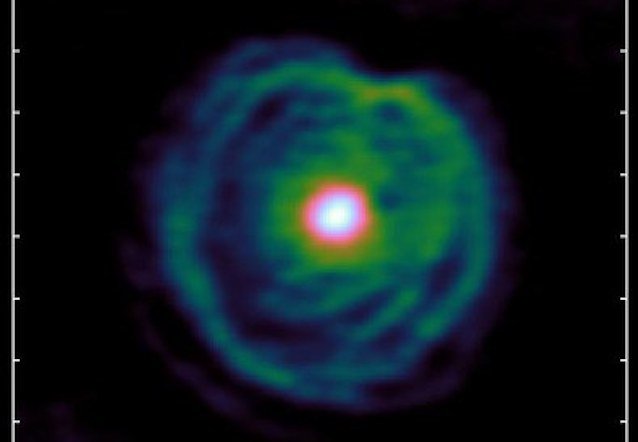
A new study published in Nature Astronomy has found that stellar wind could reveal that a second star that circles an old star.
The research was done by an international team led by KU Leuven.
Previously, scientists have found that when a star gets older, it becomes bigger, colder, and redder.
These red giants eject gaseous material and solid particles through a stellar wind.
The stellar wind can be a reason that an old star loses mass.
However, researchers also found that the intense stellar wind doesn’t last long enough to account for the mass loss.
In this study, the researchers used the ALMA telescope in Chile to observe what was happening with two of these red giants.
They found for the stars, the stellar wind forms a spiral. It hints that the red giant is not alone, but part of a binary star system.
This means the red giant is the main star with a second star circling it.
According to the team, the stellar wind is pulled in the direction of the second star and the red giant itself also wiggles slightly.
The researchers suggest that the red giants were losing a lot of mass because there’s an area between the two stars.
In the area, the stellar wind is much more concentrated due to the gravity of the second star.
The new finding suggests many stars many not live alone. A star with a partner is likely to be more common.
The team now is examining whether a system with a binary star could help explain other special red giants.
One study author is Professor Leen Decin from the KU Leuven Institute of Astronomy.
Copyright © 2019 Knowridge Science Report. All rights reserved.
Further reading: Nature Astronomy.



